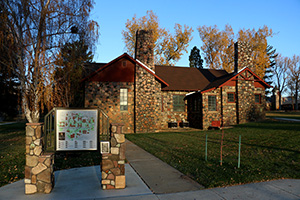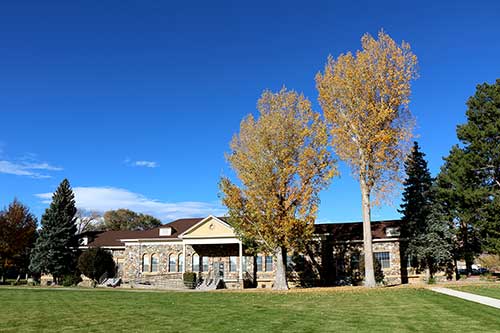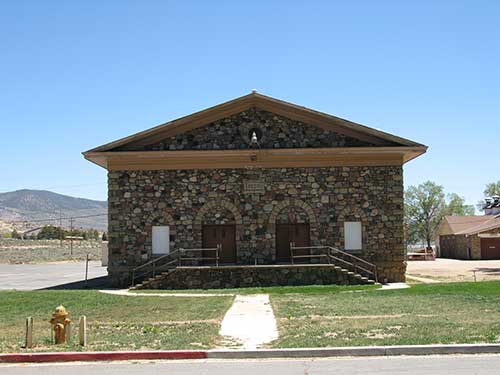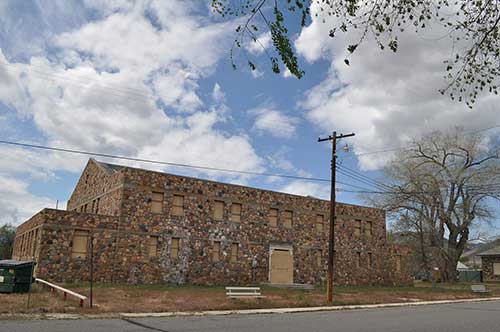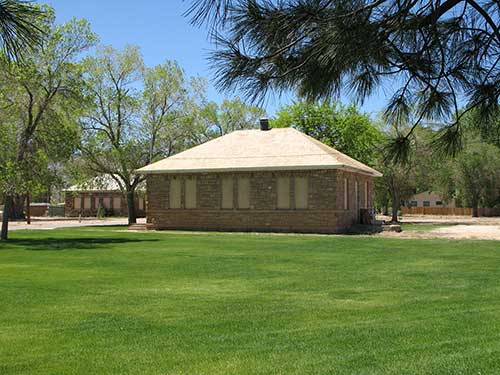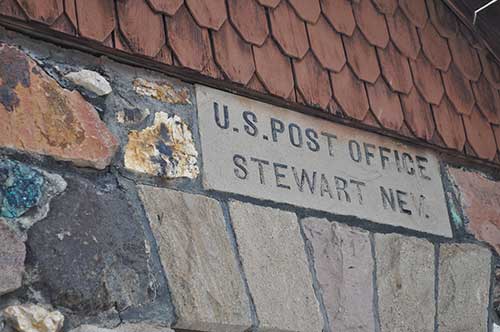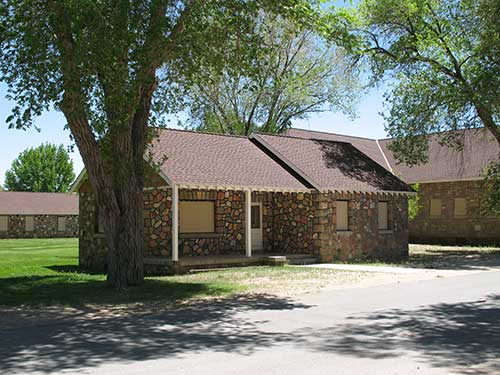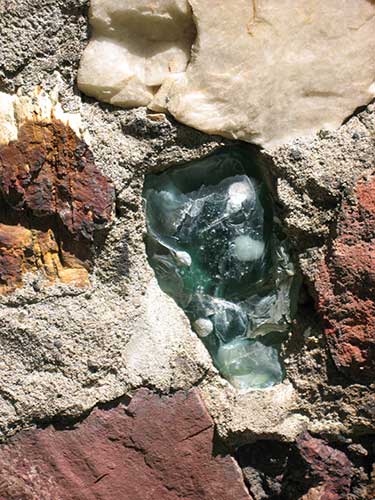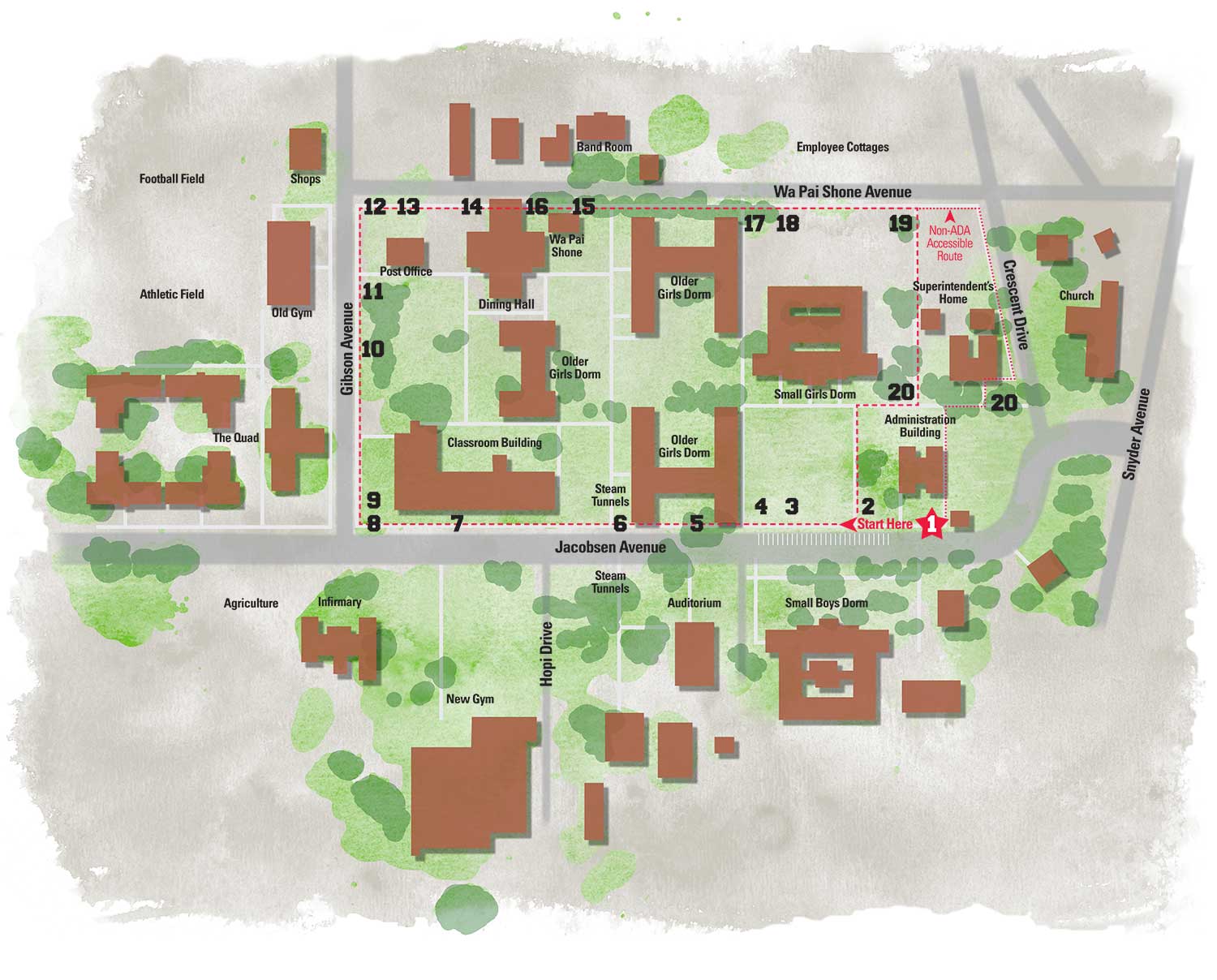Stewart Indian School Trail Map
Experience life at Stewart during our GUIDE BY CELL audio tour
Stewart Indian School Map with Podcasts:
How it works
Each numbered stop along the trail is listed below. Simply click on the podcast arrow to listen to the story told by an alumni or employee from the Stewart Indian School. To download a podcast to your computer or smart device, click on the download button.
To download a brochure, CLICK HERE.
Visiting Stewart Indian School and the
Guide by Cell Audio Tour: How it works
1. When you visit Stewart Indian School and walk the trail, call 775.546.1460 on your cell phone.
2. When you see the tour signs, enter the audio stop number followed by the # key. Signs with audio stop numbers are located near each building indicated on the map. You may remain connected throughout your visit or hang up and call back as desired. You can listen to the stories in any order. We welcome your feedback to improve our tour, so please press 0# to leave a comment.
Note: You can also download podcasts to your computer or smart device from this web page prior to visiting.
1# Welcome Message
Alum Frank Joe gives a welcome and brief history of the Stewart Indian School.
Frank Joe, Elko Band, Western Shoshone Attended Stewart 1950-1951
2# Administration Building
Alum Linda Eben Jones describes the former Administration Building, built in 1923. Stewart students taught by Hopi stonemasons built 65 stone buildings still on the 110 acres at Stewart. The Stewart Indian School Cultural Center & Museum shares the stories told by the students who attended Stewart from 1890-1980.
Linda Eben Jones, Northern Paiute
Attended Stewart 1963-1966
3# Small Girls Dorm
Aletha Tom came to Stewart on a bus from the Moapa Indian reservation in Southern Nevada when she was 12 years old. This was the first time away from her mother and her reservation and she tells of the strict rules she had to follow staying in the Small Girls Dormitory.
Aletha Tom, Moapa Band of Paiutes
Attended Stewart 1959-1965
4# Small Boys Dorm
Chucko Williams shares his memories of working at Stewart in the Boys Department as the Boys Dorm Attendant and the Dorm Supervisor. He describes the strict daily routine of the boys and the duties they were assigned if they didn’t comply.
Everette “Chucko” Williams, Walker River Paiute
Attended Stewart 1946-1950
Worked at Stewart 1954 -1980
5# Auditorium
Daisy Mae Pete Smith was six years old when she arrived at Stewart. She shares her memories of the auditorium and her first Christmas pageant.
Daisy Mae Pete Smith, Western Shoshone
Attended Stewart 1939-1941 and 1944-1950
6# Steam Tunnels
The entire Stewart campus was heated by steam from underground tunnels which was supplied with coal and wood chips delivered by train on the Virginia and Truckee Trail spur. Larry Hale, former Stewart Buildings and Grounds supervisor, describes the tunnels. During his 40 years at Stewart, Larry had worked in every building, helped take care of the grounds, and knew how many gallons of water were needed in the boiler as well as in the water tower.
Larry Hale, Paiute/Miwok, and Kickapoo/Sac and Fox
Worked at Stewart for 40 years
7# New Gym & Classroom Bldg.
Buck Sampson describes how the new gym was the center for boxing in the Western US. Buck says, “just like New York had Madison Square Garden, we have Moccasin Square Garden.” Buck describes the American history class taught in the two-story classroom building.
Floyd “Buck” Sampson, Northern Paiute
Attended Stewart 1968-1971
8# Infirmary
Florence Millett shares her vivid memories of working at the infirmary and her personal struggle against loneliness. She was only 12 years old when she arrived at Stewart.
Florence Millett, Duckwater Shoshone
Arrived at Stewart in 1950
9# Agriculture
Though his primary interest at Stewart was electricity, Andy Allen recalls his memories of working in the campus butcher shop and dairy.
Andrew “Andy” Allen, Walker River Paiute
Attended Stewart 1945-1948
10# The Quad
A third generation of employee at Stewart, William Oliver remembers his life as a Guidance Counselor at the Quad, the boys’ cottage. He remembers that students needed a pass—A, B, or C, to be able to go to Carson or attend events.
William Oliver, Fond du Lac/Chippewa
Worked at Stewart 1964-1980
11# Old Gym & Athletic Fields
Judge Robey Willis, former boxing coach at Stewart, shares memories of working at Stewart as boxing coach and assistant football coach. He describes some of his favorite moments in both the old gym and the football field.
Robey Willis, judge and coach
Worked at Stewart 1969-1979
12# Shops (Carpentry)
Hilman Tobey describes his experiences attending school in the morning and working at the carpentry shop in the afternoons building dressers, fences, and coffins.
Hilman Tobey, Pyramid Lake Paiute
Attended Stewart 1926-1937
13# Bakery/Post Office
This building served first as a bakery in the 1930s, baking bread for the students being served in the dining hall. In 1960 the building housed Tebe Nobe, the arts and crafts classes taught by Fred Forbush. From 1975 the building was used as the post office for the Stewart campus and the surrounding community. Stewart, Nevada, had its own zip code: 89437.
Daryl Haines, post office worker
Worked in post office 1975-1981
14# Dining Hall
Bernice came to Stewart in 1940 with her father Ernest Wungnema, attended Stewart, then decided to work at Stewart for the next 30 years. She became the first female cook in the dining hall, and prepared three meals a day for 600 students, seven days a week. She had secret helpers.
Bernice Wungnema Gorham, Hotevilla Hopi
Attended Stewart 1940-1945
Worked at Stewart in dining hall 1948-1978
15# Band Room
Earl Laird, Jr., tells the story of his father who arrived at Stewart in 1930 and stayed for 39 years to teach Stewart students. They performed in every Nevada Day parade and won many music festivals.
Earl Laird, Jr.
Son of Earl Laird, Sr., band director from 1930-1969
16# Wa Pai Shone
Terri McBride shares how the first Wa Pai Shone Trading Post was established at Stewart. She explains how the Great Basin Native artists sold their art and managed four trading posts in the region.
Terri McBride
Researcher and Oral Historian
17# Older Girls Dorm
Alum Thelma DeLorme arrived at Stewart from the Reno-Sparks Indian Colony when she was 15 years old. Thelma remembers her days living with other girls in the Older Girls Dorm.
Thelma Albright Delorme, N. Paiute
Attended Stewart 1941-1944
18# Employee Cottages
Earl Laird, Jr., was born at Stewart in 1934 and recalls growing up on the Campus. He calls it the best place in the world.
Earl Laird, Jr.
Son of band director Earl Laird, Sr.
Born at Stewart in 1934
19# Superintendent’s Home
Marion Christensen remembers that students were not allowed to go into the Superintendents home, except when they were invited to attend or work at Christmas parties.
Marion Lee Christensen, Ely Shoshone
Attended Stewart 1948-1950
20# Stone Buildings
Bernice Wungnema Gorham talks about her father and brothers who built many of the 65 stone buildings on the Stewart campus, including the Baptist Church.
Bernice Wungnema Gorham, Hotevilla Hopi
Attended Stewart 1940-1945
Worked at Stewart in dining hall 1948-1978
